Liana Yedigarian: A Bridge between the Armenian and Chinese Peoples
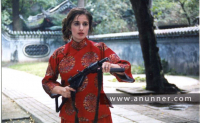 I can say that no article of mine has generated as much interest as the one published in 2002 in Azg daily about Liana Yedigarian, a native of Yerevan studying in China, who has appeared in numerous Chinese television movies. That article was translated into French, Spanish and Turkish in the Diaspora, and into English and Russian on the Internet. Indeed, she is the most exotic of the principal “heroines” in my book entitled Hayere hamashkharayin kinoyum [Armenians in International Cinema], published in 2004. Truly, this case is unprecedented and worthy of attention, for this attractive Armenian girl, who has had a great love of China and its culture since childhood, has become a striking figure of Chinese cinema owing to her marvelous knowledge of Chinese and her acting talent. Liana is back in Armenia again, with her cute daughter, five-year-old Arpine, and newborn son Adel. She is busy doing written and oral translations from Armenian to Chinese and vice versa.
I can say that no article of mine has generated as much interest as the one published in 2002 in Azg daily about Liana Yedigarian, a native of Yerevan studying in China, who has appeared in numerous Chinese television movies. That article was translated into French, Spanish and Turkish in the Diaspora, and into English and Russian on the Internet. Indeed, she is the most exotic of the principal “heroines” in my book entitled Hayere hamashkharayin kinoyum [Armenians in International Cinema], published in 2004. Truly, this case is unprecedented and worthy of attention, for this attractive Armenian girl, who has had a great love of China and its culture since childhood, has become a striking figure of Chinese cinema owing to her marvelous knowledge of Chinese and her acting talent. Liana is back in Armenia again, with her cute daughter, five-year-old Arpine, and newborn son Adel. She is busy doing written and oral translations from Armenian to Chinese and vice versa.

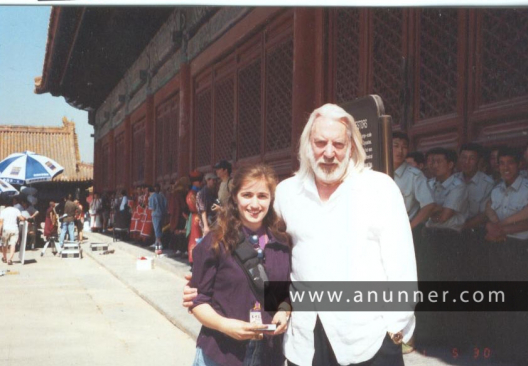
Q: Dear Liana, I discovered you for our readers six years ago, and I consider it an obligation of mine to continue to present you. What are you doing now?
A: After graduating from the Department of Chinese Language and Culture of Beijing University, I continued my education in the master’s degree program of the Department of International Relations in the Chinese city of Uhan, and presently I’m pursuing a doctoral degree there. My master’s thesis was on the topic of “Historical Sino-Armenian Ties.” They date back many centuries, to the times of the Silk Road, and continue down to the present. In my doctoral dissertation, I’m covering history, culture, economy and politics – in short, everything is to be included.
Q: Are you writing in Chinese?
A: Yes, in Chinese.
Q: This is simply unbelievable. Are you availing yourself of Chinese sources in the writing of your dissertation?
A: Unfortunately, there is very little material about Armenia in Chinese sources. A lot of work is required to check on the accuracy of a piece of information once found. For example, I recently read in the press that Indians and Armenians went to the city of Guanjou in the province of Guandu in the 13th century, and that an Armenian church was built there through a woman’s beneficence. This information must be verified through other sources.

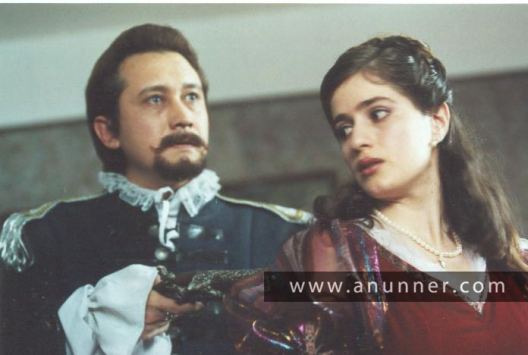
Q: Isn’t writing in Chinese difficult?
A: Writing in Chinese isn’t difficult; it’s more difficult to translate Armenian or Russian into Chinese.
Q: Liana, in effect, your mastery of Chinese is equivalent to that of Armenian. Have you attempted any translations of Armenian literature into Chinese?
A: When I was in my junior year as an undergraduate, we were given an assignment to translate something interesting from our respective national literatures. I attempted to translate Toumanian’s “Akhtamar.” Mostly I’ve done ordinary oral translations and I continue doing them, from Armenian to Chinese, and vice versa.
Q: Up until now, certain specimens of Armenian literature have been translated from Russian into Chinese, such as Sassuntsi Davit [David of Sassoun]. In my opinion, since the 21st century is China’s century, everything must be done to make our people, who are few in number, known to their people, who are quite numerous.
A: Despite the fact that Sino-Armenian ties date from the distant past, from the second century AD or earlier, there aren’t any Armenian-Chinese or Chinese-Armenian dictionaries, to date, so we use Russian-Chinese or Chinese-Russian ones. I intend now to create such dictionaries. I thought that would be an easy job but, having started it, I realize it demands a prodigious effort, requiring the assistance of linguistic experts. Initially this work will perhaps take the form of a phrase book, to be followed by more serious works. I recently translated Toumanian’s “Barekentane” [Shrovetide, Carnival], which has been submitted for publication.
Q: Liana, more than anything else, you’ve been active in the field of acting during the 11 years you’ve lived in China. Tell us how that got started.
A: Only nine days had passed following my arrival in China, in 1994, when I was approached by people from Chinese television who proposed to film me. At that time, I still didn’t know the Chinese language well but they were only interested in my looks. My first role in China was playing the daughter of an ambassador of a European country, who watches an opera from a box seat. Then, when I had already learned Chinese, I became a very desirable role player for the Chinese directors, since Chinese-speaking actresses with European looks are far and few between. Film shootings followed one another; I don’t even know the exact number of television movies and the titles of many of them, since the majority of my roles have been in single episodes or group scenes. There were days when shooting took place in three different locations, with me playing the roles of girls of vastly different nationalities.

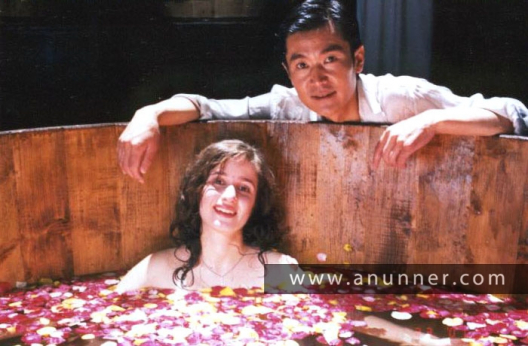
Q: But you have also played principal roles. When I was in your apartment, I saw excerpts from a television serial, in which you were the primary actress.
A: Yes, I’ve appeared in principal roles in six television movie series. My first major role was Felicia, crown princess of Germany, in the 30-part film series “The Messenger of the Chinese Dynasty.” My sister, Marina, also appeared in a small role in this series. My other major roles were: American policewoman Katie (“Exceptional Business”); the American woman (“Zhou Guan Tsun Street”); the Dutch woman (“Taiwanese Hero Jin Chin Gun”); Jesse (“The Old-Fashioned Emperor”). And the film you mentioned, “The Flower that Faded Early,” is the name of the television film series, in which I played my biggest role, that of an American woman named Jenny, who marries a Chinaman in the 1940’s and has a lot of problems in China with her husband’s family and Chinese society.
Q: I know that you Yedigarian sisters have been named “Yameyniya jiemey hua,” namely “Armenian sister flowers,” in China. I’ve also seen a videotape, in which you, along with your sister, were singing a Chinese song.
A: Marina and I have participated in numerous programs and television shows; we’ve acted together with Chinese actors and actresses in small satirical productions; we’ve performed Chinese songs and often Armenian songs too, wearing Armenian costumes. One time, Marina performed Komitas’s “Gakavik” [Partridge], and I accompanied her on the kanon. In another concert, I performed Sayat-Nova’s song “Eshkhemed” on the kanon and the Ughur popular song “The Girl of Tabanchin,” which is commonly heard in China and which I had transcribed for the kanon. The audience gave a very warm reception to this piece; the entire performance was also shown on television.
Q: And what is Marina doing now?
A: My sister graduated from the Department of Chinese Language at Beijing University; now she’s working for a Russian airline as a translator from Chinese to Russian and vice versa. Sometimes she’s invited to participate in television shows on Saturdays and Sundays. In 2002, an artistic competition was announced in the Beijing Opera, and Marina won the “Golden Dragon” prize.
Q: How many Armenians are there in China presently?
A: I don’t know the exact number but I don’t think it’s more than 30. In Beijing alone, there are 15 students from Armenia. The following are living in China today: the businessman Tigran Gulekian; the violinist Sergey Gevorgian, who teaches at the Guanjou Conservatory; the cycling trainer Albert Soloyan; Anna of Armenia, who teaches English at Szechuan University. The Chinese Armenians don’t have their own center; sometimes they get together at the Armenian embassy in Beijing.

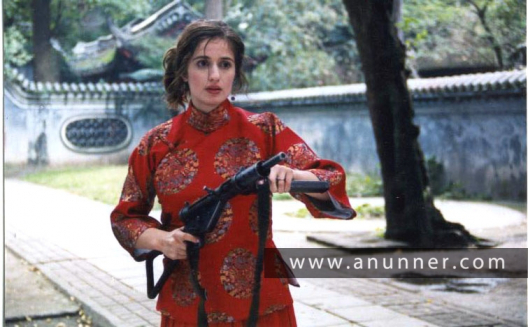
Q: What plans do you have?
A: I dream of again returning to the field of acting. I would like to settle down in China but since that country doesn’t grant citizenship, it doesn’t make any sense to look for permanent work there. My life’s purpose, wherever I may be, is to serve as a bridge between the Armenian and Chinese peoples, to make an important contribution to the development of those ties. I’m sure everything will work out fine.
After the interview, Liana began to teach me a Chinese song at my request. Now I always have in hand the words to the much-loved Chinese song “Memories from the Siemen Teahouse,” which is extremely hard to learn. The Chinese themselves have difficulty singing it but it springs so lightly and authentically from the lips of Yerevan native Liana. I recalled the following story told to me by my American-Armenian friend Raffi Setian: when he was working at a university in a city in northern China, he asked the Chinese secretary to call Liana Yedigarian in Beijing. Following the phone conversation, the young Chinese girl couldn’t believe that she had been speaking with a non-Chinese, so fluently and accent-free did Liana speak Chinese.
• ՀՈԴՎԱԾՆԵՐԸ ՄԱՍՆԱԿԻ ԿԱՄ ԱՄԲՈՂՋՈՒԹՅԱՄԲ ԱՐՏԱՏՊԵԼՈՒ ԿԱՄ ՕԳՏԱԳՈՐԾԵԼՈՒ ԴԵՊՔՈՒՄ ՀՂՈՒՄԸ www.anunner.com ԿԱՅՔԻՆ ՊԱՐՏԱԴԻՐ Է :
• ԵԹԵ ԴՈՒՔ ՈՒՆԵՔ ՍՈՒՅՆ ՀՈԴՎԱԾԸ ԼՐԱՑՆՈՂ ՀԱՎԱՍՏԻ ՏԵՂԵԿՈՒԹՅՈՒՆՆԵՐ ԵՎ
ԼՈՒՍԱՆԿԱՐՆԵՐ,ԽՆԴՐՈՒՄ ԵՆՔ ՈՒՂԱՐԿԵԼ ԴՐԱՆՔ info@anunner.com ԷԼ. ՓՈՍՏԻՆ:
• ԵԹԵ ՆԿԱՏԵԼ ԵՔ ՎՐԻՊԱԿ ԿԱՄ ԱՆՀԱՄԱՊԱՏԱՍԽԱՆՈՒԹՅՈՒՆ, ԽՆԴՐՈՒՄ ԵՆՔ ՏԵՂԵԿԱՑՆԵԼ ՄԵԶ` info@anunner.com:
| Կիսվել : |
 18:13
18:13 Սեպտեմբերի 23-ին Երևանի «Գևորգյան» ցուցասրահում տեղի ունեցավ հայազգի նկարիչ Օնիկ Սահակյանի անհատական ցուցահանդեսը: Սա այն դեպքն է, որի մասին անվերապահորեն կարելի է ասել՝ «անցավ աննախադեպ հաջողությամբ»: Ցուցադրությունը տևեց 15 օր, որի ընթացքում օրական 200-ից ավելի այցելու էր գալիս: Բերված 16 աշխատանքից յոթը վաճառվեցին (14-ը հատուկ նկարվել էր Երևան բերելու համար): Այստեղ մեծ դեր ուներ ոչ միայն պրոֆեսիոնալ գովազդը, այլև այն հանգամանքը, որ Սահակյանը եղել է Սալվադոր Դալիի մտերիմ բարեկամը և օգնականը: ...
Սեպտեմբերի 23-ին Երևանի «Գևորգյան» ցուցասրահում տեղի ունեցավ հայազգի նկարիչ Օնիկ Սահակյանի անհատական ցուցահանդեսը: Սա այն դեպքն է, որի մասին անվերապահորեն կարելի է ասել՝ «անցավ աննախադեպ հաջողությամբ»: Ցուցադրությունը տևեց 15 օր, որի ընթացքում օրական 200-ից ավելի այցելու էր գալիս: Բերված 16 աշխատանքից յոթը վաճառվեցին (14-ը հատուկ նկարվել էր Երևան բերելու համար): Այստեղ մեծ դեր ուներ ոչ միայն պրոֆեսիոնալ գովազդը, այլև այն հանգամանքը, որ Սահակյանը եղել է Սալվադոր Դալիի մտերիմ բարեկամը և օգնականը: ...
 18:10
18:10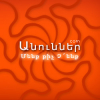 1900 թվականին Ֆլորենցիայի եւ Փարիզի երկու հրատարակչություն լույս են ընծայել ֆրանսերեն մի գիրք՝ «Տեսություն (սոցիալական հետազոտություն)» («Considռrations (Etudes sociales)») վերնագրով, որի հեղինակը հանդես էր եկել Արմենա ծածկանվամբ: Գիրքը, որ վերաբերում էր հայկական հարցին և այդ խնդրի շուրջ եվրոպական դիվանագիտության դիրքորոշմանը, լայն արձագանք է ունեցել եվրոպացի մասնագետների շրջանում: Հեղինակին անվանել են «վեհանձն և բորբոքյալ հոգի», «հանրագիտակ»: Ֆրանսիացի քաղաքական գործիչ Ժան Ժորեսն այդ գիրքը համա...
1900 թվականին Ֆլորենցիայի եւ Փարիզի երկու հրատարակչություն լույս են ընծայել ֆրանսերեն մի գիրք՝ «Տեսություն (սոցիալական հետազոտություն)» («Considռrations (Etudes sociales)») վերնագրով, որի հեղինակը հանդես էր եկել Արմենա ծածկանվամբ: Գիրքը, որ վերաբերում էր հայկական հարցին և այդ խնդրի շուրջ եվրոպական դիվանագիտության դիրքորոշմանը, լայն արձագանք է ունեցել եվրոպացի մասնագետների շրջանում: Հեղինակին անվանել են «վեհանձն և բորբոքյալ հոգի», «հանրագիտակ»: Ֆրանսիացի քաղաքական գործիչ Ժան Ժորեսն այդ գիրքը համա...
 18:07
18:07 Երևանյան դերասանների ընտանիքում Մնջախաղի պետական թատրոնի դերասանուհի Ռուզան Հակոբյանը էականորեն տարբերվում է իր գործընկերուհիներից։ Ոչ միայն իր տարաշխարհիկ, ոչ ստանդարտ արտաքինով։ Թվում է, թե մեր դերասանուհիներից ուրիշ ոչ մեկի խաղն այնքան ենթարկված չէ պլաստիկային, որքան նրանը։ Թվում է, թե իր մարմնի շարժումներով և արտահայտիչ դիմախաղով նա ի զորու է մարմնավորել ամեն մի երևույթ։ Պլաստիկայի լեզվով կերպարի ոչ միայն արտաքինը, այլև ներքինը պատկերելու նրա ձիրքն անուրանալի է։ Երբ որ Ռուզան Հակոբյանը մարմն...
Երևանյան դերասանների ընտանիքում Մնջախաղի պետական թատրոնի դերասանուհի Ռուզան Հակոբյանը էականորեն տարբերվում է իր գործընկերուհիներից։ Ոչ միայն իր տարաշխարհիկ, ոչ ստանդարտ արտաքինով։ Թվում է, թե մեր դերասանուհիներից ուրիշ ոչ մեկի խաղն այնքան ենթարկված չէ պլաստիկային, որքան նրանը։ Թվում է, թե իր մարմնի շարժումներով և արտահայտիչ դիմախաղով նա ի զորու է մարմնավորել ամեն մի երևույթ։ Պլաստիկայի լեզվով կերպարի ոչ միայն արտաքինը, այլև ներքինը պատկերելու նրա ձիրքն անուրանալի է։ Երբ որ Ռուզան Հակոբյանը մարմն...
 17:57
17:57 Համաշխարհային թատրոնի պատմությունն ուսումնասիրելիս նկատելի է մի ուշագրավ իրողություն. 19-րդ դարի վերջին, 20-րդ դարի սկզբին մի շարք հայորդիների վիճակվել է դառնալ այս կամ այն ժողովրդի թատերական գործի ռահվիրա։ Թուրքական պրոֆեսիոնալ թատրոնի հիմնադիրներ դարձան Հակոբ Վարդովյանը և Մարտիրոս Մնակյանը, Իրանում եվրոպական տիպի առաջին ներկայացումը բեմադրեց Արմեն Օհանյանը, վրացական նոր թատրոնի հիմնադիրներից է Միխայիլ Թումանովը, ռուսական էստրադային թատրոնի հիմքը դրեց Նիկիտա Բալիևը, Մոսկվայի հրեական թատրոնինը՝ ...
Համաշխարհային թատրոնի պատմությունն ուսումնասիրելիս նկատելի է մի ուշագրավ իրողություն. 19-րդ դարի վերջին, 20-րդ դարի սկզբին մի շարք հայորդիների վիճակվել է դառնալ այս կամ այն ժողովրդի թատերական գործի ռահվիրա։ Թուրքական պրոֆեսիոնալ թատրոնի հիմնադիրներ դարձան Հակոբ Վարդովյանը և Մարտիրոս Մնակյանը, Իրանում եվրոպական տիպի առաջին ներկայացումը բեմադրեց Արմեն Օհանյանը, վրացական նոր թատրոնի հիմնադիրներից է Միխայիլ Թումանովը, ռուսական էստրադային թատրոնի հիմքը դրեց Նիկիտա Բալիևը, Մոսկվայի հրեական թատրոնինը՝ ...
 17:49
17:49 2007թ-ին Լոնդոնում լույս տեսավ Ֆրանսիայում, Անգլիայում և Ավստրալիայում աշխատած բալետի պարուհի Թամարա Չինարովա Ֆինչի «Պարելով դեպի անհայտը. իմ կյանքը «Բալե Ռյուսում» և նրանից հետո» հուշագիրքը։ Այս պարուհին չի հասել համաշխարհային ճանաչման, սակայն ապրել է հարուստ և հետաքրքրական կյանքով։ Իննսունամյակի շեմին գտնվող նախկին արվեստագիտուհու այդ չափազանց հետաքրքրական հատորն ընթերցելուց հետո նամակով կապվեցինք այսօր Իսպանիայում դստեր հետ ապրող Չինարովայի հետ. վերջինս հաճույքով թույլատրեց թարգմանել իր գր...
2007թ-ին Լոնդոնում լույս տեսավ Ֆրանսիայում, Անգլիայում և Ավստրալիայում աշխատած բալետի պարուհի Թամարա Չինարովա Ֆինչի «Պարելով դեպի անհայտը. իմ կյանքը «Բալե Ռյուսում» և նրանից հետո» հուշագիրքը։ Այս պարուհին չի հասել համաշխարհային ճանաչման, սակայն ապրել է հարուստ և հետաքրքրական կյանքով։ Իննսունամյակի շեմին գտնվող նախկին արվեստագիտուհու այդ չափազանց հետաքրքրական հատորն ընթերցելուց հետո նամակով կապվեցինք այսօր Իսպանիայում դստեր հետ ապրող Չինարովայի հետ. վերջինս հաճույքով թույլատրեց թարգմանել իր գր...












 Arian AMU
Arian AMU
